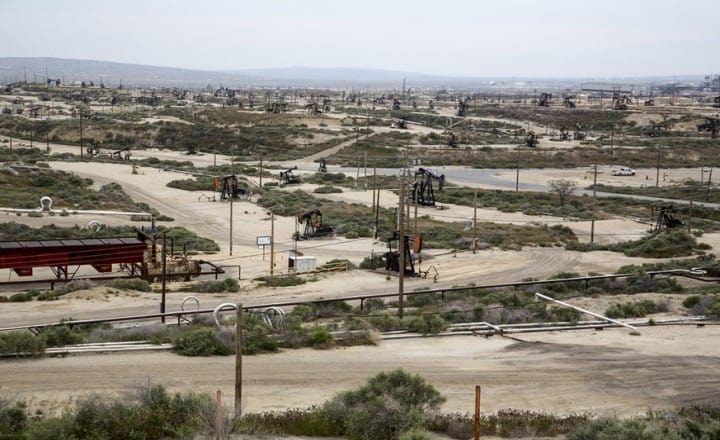California’s landscape is a mosaic of rich natural resources, teeming with minerals that have fueled both historical rushes and modern industries. This guide delves into the complex world of mineral rights in the Golden State, offering a comprehensive overview of their significance, regulatory landscape, and practical advice for stakeholders. Whether you’re an investor, landowner, or simply curious about California’s mineral bounty, this article provides essential insights into navigating the realm of mineral extraction and ownership.
In the heart of California’s diverse geology lies a treasure trove of minerals, from gold that sparked the 19th-century gold rush to today’s sought-after rare earth elements. Understanding mineral rights in this context is not just about history; it’s about grasping the present and future opportunities and challenges in mineral extraction and management. This introduction offers a primer on the pivotal role mineral rights play in California’s economic and environmental landscape.
What Are Mineral Rights?
Mineral rights are the legal entitlements to explore, extract, and sell mineral deposits beneath the Earth’s surface. Unlike surface rights, which pertain to the ownership of the land itself, mineral rights specifically address the ownership and usage of the resources below ground.
Definition and Clarity: At its core, holding mineral rights means possessing the keys to unlock and profit from the mineral wealth buried beneath parcels of land. This distinction from surface rights is crucial, as one can own the surface of a property while another holds the rights to its underground riches.
Scope of Rights: Mineral rights in California encompass a wide array of resources, including, but not limited to, oil, gas, coal, metals, and certain gemstones. The legal framework surrounding these rights is designed to balance extraction benefits with environmental and public interests.
Understanding California’s Mineral Regulations

The landscape of mineral rights in California is shaped by a complex tapestry of laws and regulatory bodies, each playing a role in overseeing the exploration and extraction activities within the state.
Regulatory Bodies: The California Department of Conservation’s Division of Mine Reclamation, among others, oversees mining operations, ensuring compliance with state laws and environmental standards.
Key Laws and Regulations: From the California Environmental Quality Act (CEQA) to the Surface Mining and Reclamation Act (SMARA), a series of state laws govern mineral extraction, focusing on sustainability, safety, and environmental protection.
Federal vs. State Jurisdiction
The interplay between federal and state jurisdictions adds layers of complexity to mineral rights management. While the federal government oversees mineral resources on federal lands, state laws primarily govern private and state-owned lands, leading to a nuanced regulatory environment.
Local Zoning and Environmental Regulations
Local zoning laws and environmental regulations further refine the regulatory landscape, influencing where and how mineral extraction can occur. These local provisions play a critical role in balancing resource development with community and ecological concerns.
How to Acquire Mineral Rights in California
Acquiring mineral rights is a strategic process, involving public auctions, private negotiations, or leasing agreements. Understanding the nuances of public versus private land acquisition is crucial for navigating this landscape effectively.
Leasing vs. Owning Mineral Rights
Choosing between leasing and owning mineral rights involves weighing immediate costs against long-term benefits and obligations. Leasing may offer a lower upfront investment, while owning provides more control and potential revenue over time.
Navigating the Permitting Process
Securing the necessary permits for mineral extraction is a meticulous and multi-faceted process, requiring adherence to both state and federal regulations.
Permit Requirements: From exploration to production, each phase of mineral development may require specific permits, underscoring the importance of thorough planning and compliance.
Environmental Impact Assessments: Conducting and submitting Environmental Impact Assessments (EIA) is a critical step in the permitting process, highlighting potential ecological effects and mitigation strategies.
What Are the Rights of Mineral Owners?

Owning mineral rights bestows specific rights and privileges, including the ability to extract and profit from the mineral resources. However, these rights come with responsibilities, particularly regarding environmental stewardship and surface rights considerations.
Mineral Royalties and Payments
Mineral royalties represent a significant aspect of mineral rights, defining the payment structure between mineral owners and operators. Understanding how royalties are calculated and negotiated is essential for ensuring fair compensation.
The Role of Mining in California’s Economy
Mining and mineral extraction have long been pillars of California’s economic development, contributing to job creation, technological innovation, and the state’s overall economic health. This section explores the current contributions and future potential of mining in California.
Current Trends and Future Prospects
Analyzing current trends in mineral extraction offers insights into the evolving landscape of mining in California. Factors such as technological advancements, market demands, and regulatory changes shape the future prospects of the mining industry in the state.
Legal and Ethical Considerations in Mineral Extraction
Navigating the legal and ethical dimensions of mineral extraction involves understanding the rights of various stakeholders, including landowners, mineral rights holders, and the broader community. This section examines common legal disputes and ethical considerations in the context of mineral rights.
Landowner Rights and Disputes
Resolving disputes between landowners and mineral rights holders requires a careful balance of interests, emphasizing the need for clear communication, negotiation, and, when necessary, legal intervention.
Environmental Impact and Sustainability Practices

The environmental implications of mineral extraction are a paramount concern, prompting a shift towards more sustainable mining practices. This section outlines the challenges and opportunities in minimizing the ecological footprint of mining activities.
Water Usage and Protection
Water management is a critical aspect of sustainable mining, with regulations and best practices aimed at preserving water quality and availability. Understanding these requirements is essential for responsible mineral extraction.
Reclamation and Restoration
Reclamation and restoration efforts are vital for mitigating the environmental impacts of mining, ensuring that land affected by extraction activities is rehabilitated and returned to a natural or usable state.
Investing in California Mineral Rights

Investing in mineral rights offers a unique opportunity with potential rewards and risks. This guide provides potential investors with insights into assessing the value of mineral rights and navigating the investment landscape.
Assessing the Value of Mineral Rights
Valuing mineral rights is a complex process, influenced by factors such as resource type, market conditions, and regulatory environment. Understanding these factors is crucial for making informed investment decisions.
Conclusion
As we’ve explored the multifaceted world of mineral rights and regulations in California, it’s clear that this realm offers both significant opportunities and challenges. From the intricate regulatory landscape to the ethical and environmental considerations, navigating mineral rights requires a comprehensive understanding and strategic approach. The future of mineral rights in California looks promising, with advancements in sustainable mining practices and ongoing investments in the sector. However, the key to unlocking this potential lies in balancing economic benefits with environmental stewardship and community interests, ensuring a prosperous and sustainable future for mining in the Golden State.

